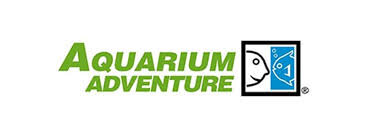Aquarium Water
Part 1
The water, in which fish live, is extremely important to them. It carries oxygen to them, and carries away their wastes.
Toxic Waste Products
Fish produce wastes as a natural part of life. These wastes need to be processed; otherwise they will accumulate to dangerous levels in the aquarium. Filters help accomplish this process. Ammonia (NH4) is the primary nitrogenous waste product created by fish. In elevated levels, ammonia will damage sensitive tissue areas of fish, such as fins and gills. Nitrites, another waste product created by fish, can be harmful in elevated doses, too. By properly monitoring and managing the water characteristics through filtration and maintenance, these toxic waste products are prevented from causing harm.
Hardness
Water hardness is a measurement of the level of dissolved solids present in a water sample. Water with no hardness, or no dissolved solids, is pure water. As ideal as that sounds, this water is not suitable for fish. Some level of dissolved solids is necessary for gills to function properly. Typically the solids dissolved in water are salts. These salts can help stabilize pH levels in a body of water, which is why hardness can be helpful. Most fish can tolerate a wide range of hardness levels, so managing the hardness level is not critical. When trying to breed fish, though, it may be of some use to control the water hardness and try to recreate the fish’s natural environment.
pH
This measurement is a number that expresses the degree of acidity or alkalinity of a solution and pH numbers run from 0 to 14, with 7 being the midway, or neutral. Since it is a logarithmic function, the difference between two consecutive steps (ex. 7 to 6) is tenfold. In other words, 6 is ten times more acidic than 7. Fish are very in tune with the pH of the water, and abrupt changes, as seen, can have drastic effects. Therefore, the overriding message with fish is to maintain a stable pH. As with hardness, most fish can tolerate a wide range of pH values to live in, provided the levels are kept steady.
Every solution has a pH value, so an aquarium will “begin” with a baseline pH value as well. The mere presence of organisms (bacteria, fish, plants, etc.) can alter the pH level. In aquariums, the pH will have a tendency to drop, as acids are produced by bacteria through the nitrogen cycle. When a water change is performed, the pH may rise, as some water with a low pH is removed and replaced by water with a higher pH. This is one of the reasons why it is important to do regular frequent water changes in the aquarium; it helps maintain a steady pH.
Alkalinity
Perhaps a better monitor of pH is alkalinity. Alkalinity is described as “buffering capacity”’ meaning there are enough solids in the water to buffer itself against the buildup of acids (which will eat away at these solids and cause the pH to drop or fluctuate). Remember, it is not a low or high pH that is stressful to fish but a rapid change or fluctuation from its present pH value that causes harm. The best protection against these fluctuations in pH is a stable alkalinity level. The best test to perform on the aquarium water quality is its buffering capacity or alkalinity. The best way to maintain a stable buffering capacity is regular consistent water change.
